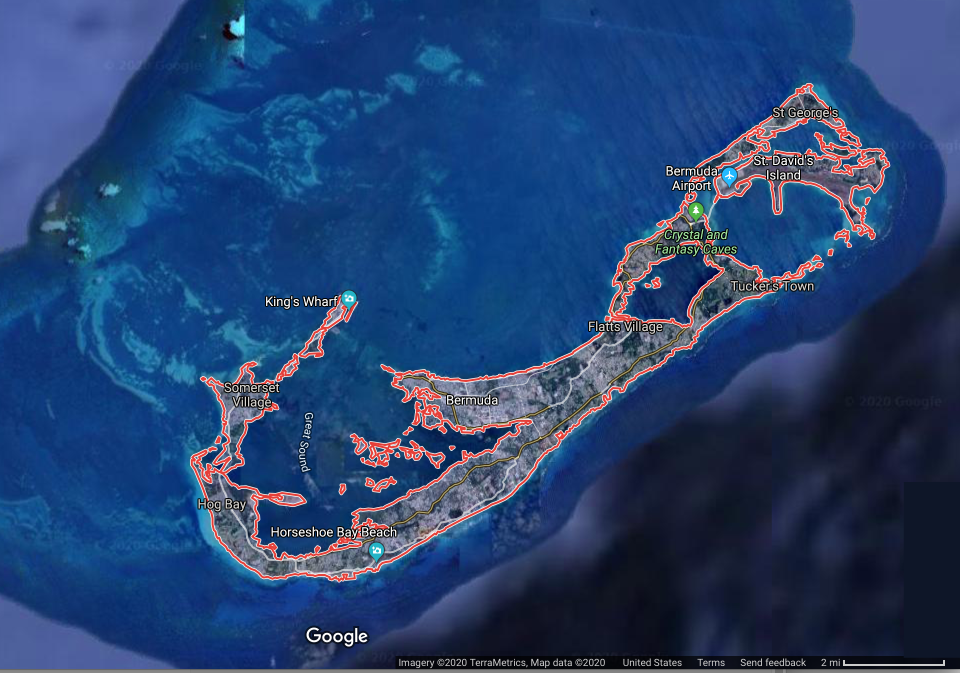The Coastal Ocean from a Hyperspectral Perspective

Credit: Norman Kuring (NASA). Download this image (GIF, 10.4 MB).
This animation was produced from a scene collected over Bermuda on August 17, 2013. It cycles through all 128 HICO channels - three at a time. The sliders on the right show which channels (represented by their central wavelength in nanometers) were used for the red, green, and blue components of each frame of the animation. No additional processing of the top-of-the-atmosphere radiances in the level-1B file was performed to make the images in the above animation other than some contrast stretching. Compare the animation with the still image of Bermuda from Google Maps (below).


